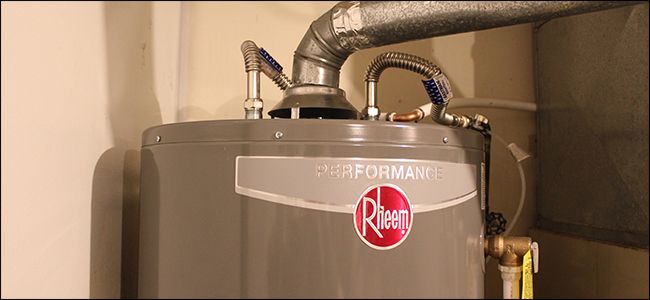How to Care for Your Home's Hot Water System Properly
How to Care for Your Home's Hot Water System Properly
Blog Article
The content following next about Tips on Maintaining a Water Heater is exceptionally compelling. Check it out yourself and see what you think of it.

Hot water is essential for everyday comfort, whether it's for a revitalizing shower or cleaning meals. To guarantee your warm water system runs effectively and lasts much longer, routine maintenance is vital. This article supplies sensible pointers and understandings on how to maintain your home's warm water system to avoid disturbances and pricey repair services.
Intro
Keeping your home's warm water system could seem daunting, however with a couple of simple steps, you can ensure it operates efficiently for years to come. This overview covers every little thing from understanding your hot water system to DIY maintenance pointers and understanding when to call in specialist help.
Relevance of Maintaining Your Warm Water System
Regular maintenance not just extends the life-span of your hot water system yet likewise guarantees it operates successfully. Overlooking upkeep can lead to reduced efficiency, greater power bills, and also early failure of the system.
Indications Your Warm Water System Requirements Upkeep
Knowing when your hot water system requires focus can avoid significant concerns. Watch out for signs such as inconsistent water temperature level, weird noises from the heating unit, or corroded water.
Comprehending Your Warm Water System
Prior to diving right into maintenance tasks, it's practical to recognize the basic elements of your warm water system. Typically, this consists of the hot water heater itself, pipes, anode poles, and temperature level controls.
Month-to-month Upkeep Tasks
Routine regular monthly checks can assist catch minor issues before they intensify.
Flushing the Hot Water Heater
Flushing your hot water heater eliminates sediment build-up, enhancing effectiveness and prolonging its life.
Monitoring and Changing Anode Rods
Anode rods prevent rust inside the tank. Examining and changing them when worn is critical.
Checking and Changing Temperature Level Setups
Changing the temperature level settings guarantees ideal efficiency and safety and security.
Do It Yourself Tips for Upkeep
You can do a number of upkeep tasks yourself to keep your hot water system in top condition.
Checking for Leakages
Routinely inspect pipes and connections for leaks, as these can lead to water damages and greater costs.
Evaluating Pressure Relief Valves
Evaluating the pressure safety valve guarantees it works properly and avoids extreme pressure accumulation.
Protecting Pipelines
Shielding warm water pipes reduces warm loss and can save power.
When to Call a Specialist
While do it yourself maintenance is advantageous, some issues require specialist experience.
Facility Problems Requiring Specialist Assistance
Examples consist of significant leaks, electric issues, or if your water heater is continually underperforming.
Regular Professional Maintenance Conveniences
Expert upkeep can consist of comprehensive inspections, tune-ups, and making sure compliance with safety and security standards.
Final thought
Regular upkeep of your home's hot water system is crucial for effectiveness, long life, and cost financial savings. By following these pointers and understanding when to look for expert aid, you can make certain a reputable supply of hot water without unforeseen disturbances.
How to Maintain an Instant Hot Water Heater
Before tinkering with your hot water heater, make sure that it’s not powered on. You also have to turn off the main circuit breaker and shut off the main gas line to prevent accidents. Also turn off the water valves connected to your unit to prevent water from flowing into and out of the appliance. 2. When you’re done, you have to detach the purge valves’ caps. These look like the letter “T†and are situated on either side of the water valves. Doing so will release any pressure that has accumulated inside the valves while at the same time avoid hot water from shooting out and burning your skin. 3. When the purge valves’ caps are removed, you have to connect your hosing lines to the valves. Your unit should have come with three hoses but if it didn’t, you can purchase these things from any hardware or home repair shops. You can also get them from retail stores that sell water heating systems. Read the user’s manual and follow it to complete this task properly. When the hosing lines are connected, open the purge port’s valves. 4. You should never use harsh chemical cleaners or solutions when cleaning your unit. Make use of white vinegar instead. It should be undiluted and you’ll probably use about 2 gallons. 5. Now flush your water heater. This task should probably take about 40 minutes. We can’t give you specific directions for this because the procedure is carried out depending on the type, model and brand of your heater. With that being said, refer to the user’s manual. 6. When you’re done draining the unit, you have to turn off the purge port valves again. Remove the hosing lines that you earlier installed on each of the water valves. Put the valve caps (purge port) back in their respective places and be very careful so as not to damage the rubber discs that are found inside these caps. 7. Now that everything’s back in place, check your user’s manual again to find out how to reactivate your water heating system. 8. Once it is working, turn one of your hot water faucets on just to let air pass through the heater’s water supply pipes. Leave the tap on until water flows smoothly out of it. https://www.orrplumbing.com/blog/2014/september/how-to-maintain-an-instant-hot-water-heater/

I came across that blog posting on How to Maintain a Hot Water Heater in a Few Simple Steps while scouting around the internet. Sharing is nice. Who knows, you will be doing someone a favor. Many thanks for your time. Revisit us soon.
Additional Information Report this page